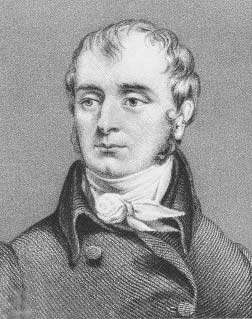Marie François Xavier Bichat (Marie François Xavier Bichat)

Bichat was born at Thoirette in Jura, France. His father was Jean-Baptise Bichat, a physician who had trained at Montpellier and was Bichat’s first instructor. His mother was Jeanne-Rose Bichat, his father’s wife and cousin. He entered the college of Nantua, and later studied at Lyon. He made rapid progress in mathematics and the physical sciences, but ultimately devoted himself to the study of anatomy and surgery under the guidance of Marc-Antoine Petit (1766–1811), chief surgeon to the Hotel-Dieu at Lyon.
The revolutionary disturbances compelled him to flee from Lyon and take refuge in Paris in 1793. There he became a pupil of P. J. Desault, who was so impressed with his genius that he took him into his house and treated him as his adopted son. For two years he took active part in Desault’s work, at the same time pursuing his own research in anatomy and physiology. Desault passed in 1795. At age 29 he was appointed as the chief physician to the Hotel-Dieu. In 1796, he and several other colleagues formally founded the Société d’Emulation de Paris, which provided an intellectual platform for debating problems in medicine. He died at age 30, fourteen days after falling down a set of stairs at Hotel-Dieu and acquiring a fever. He is buried at Père Lachaise Cemetery. The sudden death of Desault in 1795 was a severe blow to Bichat. His first task was to discharge the obligations he owed his benefactor, by contributing to the support of his widow and her son, and by completing the fourth volume of Desault’s Journal de Chirurgie to which he added a biographical memoir of its author.
His next objective was to reunite and digest in one body the surgical doctrines which Desault had published in various periodical works. Of these he composed, Œuvres chirurgicales de Desault, ou tableau de sa doctrine, et de sa pratique dens le traitement des maladies externes (1798–1799), a work in which, although he professes only to set forth the ideas of another, he develops them with the clearness of one who is a master of the subject. In 1797. be began a course of anatomical demonstrations, and his success encouraged him to extend the plan of his lectures, and boldly to announce a course of operative surgery. In 1798, he gave in addition a separate course of physiology. A dangerous attack of haemoptysis interrupted his labors for a time; but the danger was no sooner past than he plunged into new engagements with the same ardour as before. He had now scope in his physiological lectures for a fuller exposition of his original views on the animal economy, which excited much attention in the medical schools at Paris.
Sketches of these doctrines were given by him in three papers contained in the Memoirs of the Société Médicale d’Émulation, which he founded in 1796, and they were afterwards more fully developed in his Traité sur les membranes (Treatise on Membranes, 1799). His next publication was the Recherches physiologiques sur la vie et la mort (General Anatomy Applied to Physiology and Medicine, 1800), and it was quickly followed by his Anatomie générale (1801), the work which contains the fruits of his most profound and original researches. He began another work, under the title Anatomic descriptive (1801–1803), in which the organs were arranged according to his peculiar classification of their functions but lived to publish only the first two volumes.
Bichat’s main contribution to medicine and physiology was his perception that the diverse body of organs contain particular tissues or membranes, and he described 21 such membranes, including connective, muscle, and nerve tissue. Bichat did not use a microscope because he distrusted it, therefore his analyses did not include any acknowledgement of cellular structure. Nonetheless, he formed an important bridge between the organ pathology of Giovanni Battista Morgagni and the cell pathology of Rudolf Ludwig Carl Virchow.
Famously, Bichat defined life as “those set of functions which resist death”. He thought that life was separable into two parts: the organic life (also sometimes called the vegetative system) and the animal life. The organic life was the life of the heart, intestines, and other organs. Bichat theorized that this life was regulated through the ganglionic nervous system, a collection of small independent “brains” in the chest cavity. In contrast, the animal life involved harmonious, symmetrical organs such as the eyes, ears, and limbs. It included habit and memory and was ruled by the wit and the intellect. This was the function of the brain itself, although it could not exist without the heart, the center of the organic life.
Born
- November, 14, 1771
- Thoirette, France
Died
- July, 22, 1802
- Paris, France
Cemetery
- Cimetière du Père Lachaise
- Paris, France



